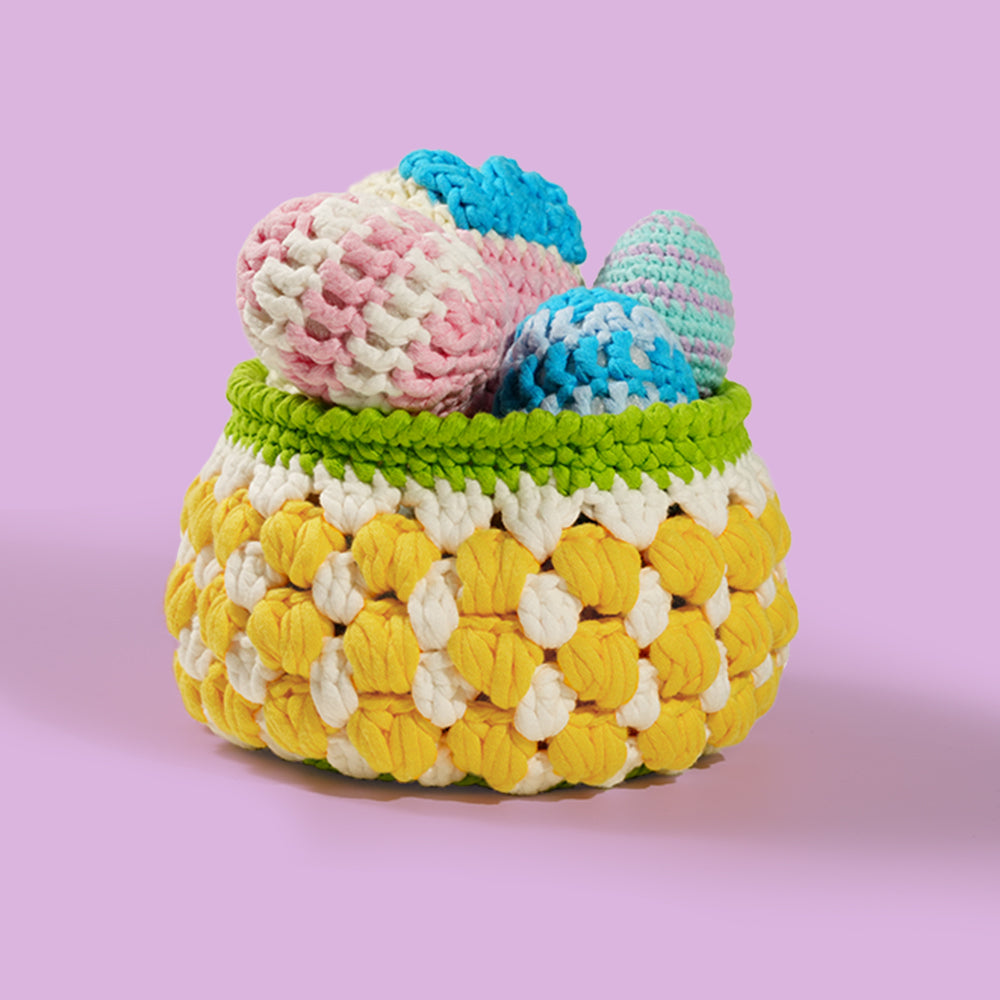How to Read Crochet Diagrams (Without Losing Your Mind)
Introduction: More Symbols, Less Stress?
You’ve finally learned to read written crochet patterns. You’re feeling confident. Then suddenly… a diagram. No words. Just a strange web of lines, X’s, dots, and little curves.
What is this—hieroglyphics?
You’re not alone. For many beginners, crochet diagrams (also called “charts” or “symbol patterns”) look like a whole new language. But once you crack the code, they can actually make crochet easier—yes, easier—especially if you’re a visual learner.
In this guide, we’ll walk you through the basics of reading crochet diagrams, help you spot patterns faster, and show you why they might just become your new favorite way to follow a project.

What Is a Crochet Diagram?
A crochet diagram is a visual representation of stitches in a pattern. Instead of written instructions like:
ch 2, sc in next st, inc in next st...
you’ll see symbols that represent each stitch, laid out in the actual shape of the project.
This makes it easier to:
-
Understand how the stitches are placed
-
Visualize how the item will grow
-
Follow patterns in any language (since symbols are universal!)
Most diagrams are used for:
-
Motifs (like granny squares or flowers)
-
Doilies and lacework
-
Amigurumi rounds
-
Borders and decorative edges
Basic Crochet Chart Symbols You Should Know
Here’s a BLOG POST of common symbols you’ll see in most beginner-level crochet :
These might vary slightly by region or designer, but most charts come with a legend or key. Always check it before starting.
How to Read a Crochet Diagram: Step by Step
🧶 1. Find the Starting Point
Most charts indicate the starting point with a small arrow or bold stitch. For flat projects, you’ll read left to right, then right to left, row by row (just like written patterns).
For round patterns, you’ll spiral out from the center.
🧶 2. Understand the Direction
-
Flat diagrams: odd rows go right to left, even rows left to right.
-
Round diagrams: follow the stitch spiral in a counterclockwise direction unless noted.
🧶 3. Follow Stitch by Stitch
Treat it like tracing a map. You’ll go from one symbol to the next, making the corresponding stitch in your work. Use a pen or highlighter to mark rows as you go.
🧶 4. Spot the Repeats
Most charts use brackets, color shading, or asterisks to show repeating sections. These save time and help you memorize the rhythm of the project faster.
When Diagrams Are Easier Than Written Patterns
Many beginners find symbol charts helpful when:
-
The written version is confusing or overly wordy
-
You prefer visual learning (especially for motifs)
-
You're working in another language—symbols are the same in every country!
-
You want to see the shape of the project (flower, square, spiral, etc.)
Once you get used to reading symbols, you’ll often find they’re more efficient and intuitive—especially for pattern-heavy work.
Kynova Tip: Written + Video = Best of Both Worlds
At Kynova, we understand that beginners learn in different ways. That’s why all our crochet kits come with:
✅ Written pdf patterns (using beginner-friendly terms)
✅ Step-by-step video tutorials (so you can see every motion)
✅ Clear diagrams (in select projects, especially for flat shapes or motifs)
We’re also exploring visual symbol guides for future kits—so if you’ve ever wanted to try reading a chart, you’ll have a gentle introduction right in the box.
Practice with a Simple Diagram Project
Want to dip your toes into chart reading? Try this:
📘 Mini Circle Coaster (Symbol Chart Practice)
Stitches used: ch, sc, inc
Diagram Overview:
-
Start with a magic ring (center)
-
Round 1: 6 sc
-
Round 2: inc in each st (12)
-
Round 3: sc, inc around (18)
Why it works: -
Easy to visualize
-
Common amigurumi base
-
Teaches you to track rounds and increases
Common Beginner Struggles (And How to Beat Them)
|
Problem |
Fix |
|
Can't tell where one round ends |
Use a stitch marker or look for round break symbols |
|
Symbols look too similar |
Refer to the key often and highlight each row |
|
Don’t know what the finished piece is supposed to be |
Cross-check with photo or written instructions |
|
Losing your place |
Use a ruler or sticky note to isolate the row |
And remember: it’s okay to zoom in, slow down, and stitch at your own pace. This isn’t a race.
Conclusion: Diagrams Are Just Another Way to Tell a Story
If you’ve been avoiding crochet diagrams because they look intimidating, now’s the perfect time to give them a second chance. They’re not secret codes—they’re visual maps, and once you learn to read them, you might never want to go back.
So next time you see a sea of symbols, don’t panic. Pick up your hook, take a deep breath, and follow the pattern one stitch at a time. Before long, those strange marks will turn into something beautiful—and maybe even a new way to enjoy your craft.
